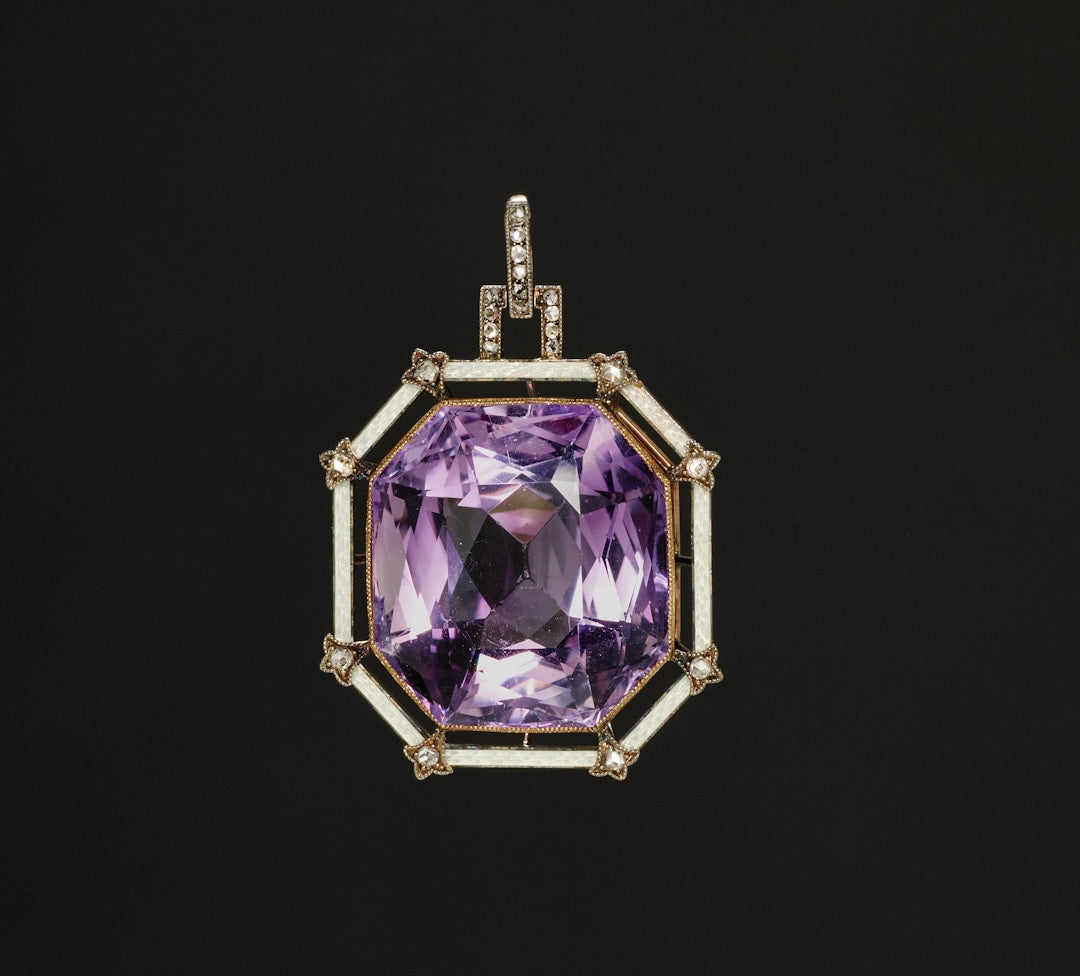The Straight Answer: Will Brass Jewelry Tarnish?
Let's cut straight to the chase. If you're wondering, "will brass jewelry tarnish?", the answer is unequivocally yes. Brass, an alloy primarily composed of copper and zinc, is known for its beautiful golden hue and durability, making it a popular choice for men's jewelry like necklaces, bracelets, and rings. However, like many metals containing copper, it reacts with elements in its environment over time, leading to tarnishing.
But don't let that deter you! Tarnish isn't necessarily a deal-breaker. Understanding why it happens, how to manage it, and even how to embrace the unique character it develops is key to enjoying brass accessories for years to come.
Understanding Brass: Why Does it Tarnish?
To understand why brass jewelry tarnishes, we need to look at its composition. Brass is an alloy, meaning it's a mixture of metals. The main components are copper and zinc. The exact ratio can vary, affecting the color and properties of the brass, but copper is always a significant ingredient.
Copper is the primary culprit behind tarnishing. It reacts naturally with oxygen, moisture, sulfur compounds in the air, and even acids and oils from your skin. This chemical reaction is called oxidation. As the copper component on the surface of your brass jewelry oxidizes, it forms a layer of copper oxide, which typically appears as a dark brown, black, or sometimes greenish coating. This is what we commonly refer to as tarnish.
Think of it like the Statue of Liberty – originally a gleaming copper structure, it developed its characteristic green patina over decades due to oxidation. While the process on your jewelry is much faster and less dramatic, the underlying chemical principle is the same.
For a deeper dive into the composition of this versatile metal, check out our article: What is Brass Made Of?
Tarnish vs. Patina: Embracing the Change
While "tarnish" often carries a negative connotation, suggesting neglect or decay, many enthusiasts and designers view the natural aging process of brass differently. The darkening and color changes that occur over time are often referred to as a patina.
A patina is essentially the same oxidation layer, but it's often appreciated for the unique character, depth, and antique look it lends to the metal. Unlike rust on iron, which corrodes and weakens the metal, the patina on brass is purely superficial and can even form a protective layer that slows down further oxidation.
So, whether you see the change as undesirable tarnish or a desirable patina often depends on personal preference and the style of the jewelry piece. Some men's brass accessories are even intentionally patinated by manufacturers to achieve a vintage or rugged aesthetic from the start.
The key takeaway? Yes, brass jewelry will tarnish (or develop a patina), but this natural process can add to its unique story and appeal.
What Makes Brass Jewelry Tarnish Faster?
While tarnishing is inevitable for brass, several factors can significantly speed up the process. Being aware of these can help you manage the appearance of your jewelry:
- Humidity and Moisture: Water is a major catalyst for oxidation. Wearing brass jewelry while swimming, showering, or even during intense workouts where you sweat heavily will accelerate tarnishing. High humidity environments also contribute.
- Air Exposure: Simple exposure to oxygen in the air causes slow oxidation. Storing your jewelry in the open, rather than an airtight container, will speed things up. Air pollutants, particularly sulfur compounds often found in urban environments, also play a significant role.
- Skin Chemistry: Everyone's skin pH and body chemistry are slightly different. The natural oils, acids, and sweat produced by your skin can react with the copper in brass. For some individuals, this reaction is more pronounced, leading to faster tarnishing.
-
Chemicals: Contact with various chemicals can drastically increase the rate of tarnish. This includes:
- Cosmetics: Hairspray, lotions, colognes, sunscreens.
- Cleaning Products: Bleach, ammonia, harsh soaps.
- Chlorine: Found in swimming pools and some tap water.
- Acidic Foods: Lemon juice, vinegar.
Understanding these factors is the first step in controlling how quickly your favorite brass pieces change appearance.
Preventing and Slowing Down Brass Tarnish
While you can't stop the tarnishing process completely (unless the brass is sealed or plated, which comes with its own considerations), you can certainly slow it down significantly with proper care. Here’s how to keep your brass jewelry looking brighter for longer:
- Keep it Dry: This is the golden rule. Always remove your brass jewelry before showering, swimming, washing dishes, or engaging in activities that cause heavy sweating. If it does get wet, dry it thoroughly immediately with a soft cloth.
- Apply Cosmetics First: Put on lotions, colognes, hairspray, and other cosmetics *before* putting on your brass jewelry. Allow these products to dry completely to minimize chemical contact.
- Store it Properly: When you're not wearing your brass pieces, store them in a cool, dry place. An airtight container, like a small ziplock bag or a jewelry box with anti-tarnish lining, is ideal. Adding an anti-tarnish strip to the container can provide extra protection.
- Wipe After Wear: After taking off your jewelry, give it a quick wipe with a soft, dry cloth (like microfiber or a jewelry polishing cloth). This removes residual moisture, oils, and sweat from your skin that could contribute to tarnishing overnight.
- Consider Sealants (Use with Caution): Some people apply a thin layer of clear nail polish or a specialized jewelry sealant to the parts of the brass that touch the skin. While this can prevent tarnish and the potential for skin discoloration, it can alter the look and feel of the metal and may wear off unevenly over time, requiring reapplication.
By incorporating these simple habits, you can significantly extend the time between necessary cleanings and maintain the original shine of your brass accessories if that's the look you prefer.
How to Clean Tarnished Brass Jewelry
So, despite your best efforts, you've noticed some **brass jewelry tarnish**. Don't worry, cleaning it is usually straightforward. The best method depends on the level of tarnish and your personal preference.
Gentle Cleaning for Light Tarnish:
For minor dullness or light tarnishing, simple methods often suffice:
- Soap and Water: Use a mild soap (like dish soap) and warm water. Gently scrub the piece with a soft cloth or a very soft toothbrush. Rinse thoroughly with clean water and, crucially, dry it completely with a soft cloth immediately afterward.
- Jewelry Polishing Cloth: A specialized polishing cloth, often impregnated with a mild cleaner, is excellent for removing light tarnish and restoring shine without harsh chemicals.
Natural DIY Cleaning Solutions for Heavier Tarnish:
For more stubborn tarnish, common household ingredients can be effective. Always test these methods on an inconspicuous area first, especially if the piece has gemstones or intricate details.
- Lemon Juice: Dip a soft cloth in lemon juice (or apply juice directly) and rub the tarnished areas. You can add a pinch of salt for extra abrasive power if needed, but be gentle. Rinse thoroughly and dry completely.
- Vinegar and Salt/Baking Soda Paste: Create a paste using white vinegar and either salt or baking soda. Apply the paste to the brass, let it sit for a few minutes (but don't let it dry completely), then gently scrub with a soft cloth or toothbrush. Rinse thoroughly and dry completely.
- Ketchup: Yes, ketchup! The mild acidity from the tomatoes and vinegar can help break down tarnish. Apply a thin layer, let it sit for a few minutes, then wipe clean, rinse, and dry thoroughly.
Important Note: Always rinse thoroughly after using acidic cleaners like lemon juice or vinegar, as residues can actually accelerate future tarnishing if not removed completely. Drying meticulously is paramount.
Commercial Brass Cleaners:
Specific brass and metal polishes are available commercially. These are often very effective but can be more abrasive. Follow the manufacturer's instructions carefully, use them in a well-ventilated area, and ensure they are suitable for jewelry (some are intended for heavier-duty applications). Always rinse and dry thoroughly after use.
Regular cleaning is essential for maintaining the look you desire. Learn more about why cleaning your brass jewelry matters and perfect your technique.
A Common Concern: Will Brass Jewelry Turn My Skin Green?
This is a frequent question related to **will brass jewelry tarnish**. The answer is: sometimes, yes. That greenish or blackish mark left on the skin isn't harmful, but it can be annoying. It's caused by the same oxidation process that tarnishes the brass itself.
When the copper in the brass reacts with the salts, acids, and moisture in your sweat, it can form copper compounds. These compounds are then absorbed by your skin, leaving a temporary green or black stain. Factors like your individual body chemistry, the acidity of your skin, humidity, and prolonged contact time influence whether or not this happens and how noticeable it is.
Keeping the jewelry clean and dry, removing it before activities that cause sweating, and occasionally applying a clear sealant to the inside of rings or bracelets can help minimize or prevent this effect. For more details, read our guide on does brass turn your skin green?
Is Brass a Good Choice for Men's Jewelry?
Absolutely! Despite the fact that **brass jewelry will tarnish**, it remains an excellent choice for men's accessories for several reasons:
- Aesthetic Appeal: Brass offers a warm, golden tone similar to gold but at a much more accessible price point. It develops a unique character over time, whether you prefer a bright polish or a rugged patina.
- Durability: Brass is a relatively hard and durable alloy, resistant to corrosion (unlike iron rusting) and capable of withstanding daily wear. It's less prone to denting than softer metals.
- Versatility: It can be crafted into a wide range of styles, from bold, statement pieces to refined, minimalist designs. It complements various fashion styles, from casual to more formal.
- Workability: Brass is easy for artisans to work with, allowing for intricate designs and details.
- The Patina Factor: For many men, the way brass ages is a feature, not a bug. The evolving patina tells a story and adds a unique, personalized touch to the jewelry.
Ultimately, the question isn't just "**will brass jewelry tarnish**?" but whether the unique properties and aging characteristics of brass align with your personal style and willingness to perform occasional maintenance. For many style-conscious men, the rich look, durability, and evolving character of brass men's jewelry make it a compelling and worthwhile choice.

